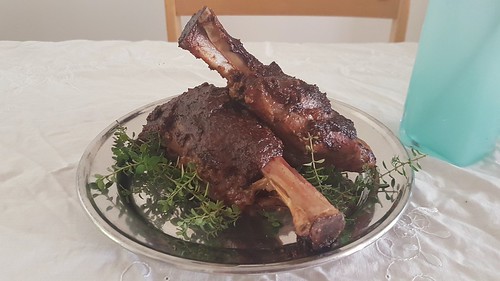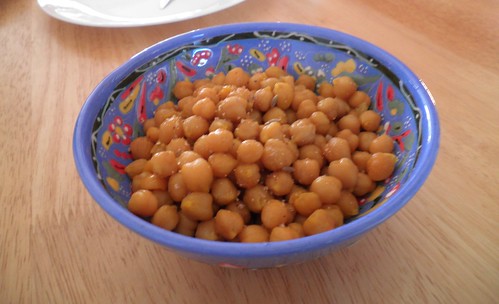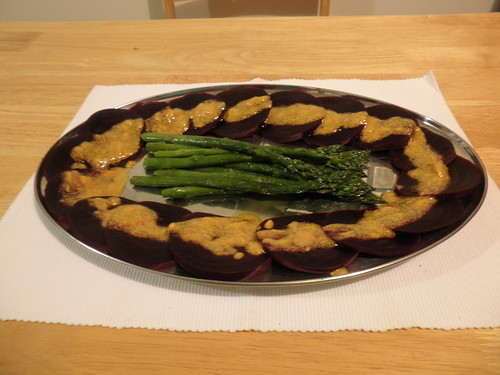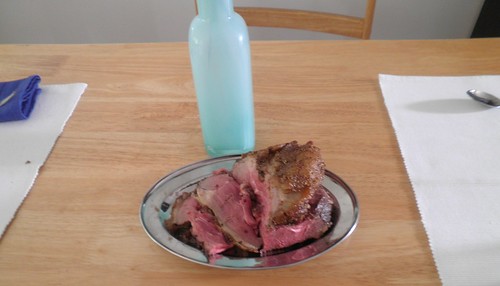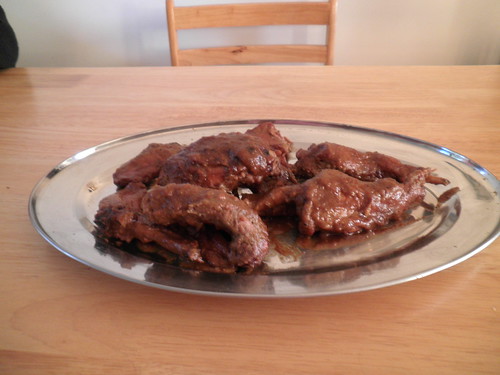In ouis apalis: piper ligusticum nucleos infuses; suffundes mel acetum, liquamine temperabis.
Sauce for soft-boiled eggs: pepper, lovage, soaked pine nuts; pour on honey, vinegar, flavour with liquamen.
This text and translation are taken from Sally Grainger and Christopher Grocock’s Apicius (2006).
This is one of the earliest historic recipes I ever cooked, over 20 years ago (eek); I used the version from Ilaria Gozzini Giacosa’s A Taste of Ancient Rome, which is one book I would highly recommend as a beginner’s guide to ancient Roman food and cooking. This is a great recipe to serve in the first course of a feast – both the eggs and the sauce can be prepared well ahead of time.
Eggs were an important food in the ancient world – even city dwellers with a small yard could keep chickens, and hen eggs could be produced in large quantity. They were regarded as aphrodisiacs (Dalby, 2003, 126).
Ingredients
| 4 large eggs | 2 tbs honey | 1/2 tsp lovage seed |
| 50g pine nuts | 1 tsp fish sauce | 1/2 tsp pepper |
| 100mL wine vinegar |
Method
- Dry fry the pine nuts over a medium heat until they start to turn golden. Keep stirring constantly. When they are golden, remove from the heat and soak in half the vinegar for at least 6 hours.
- Put the eggs into a pan of cold water, then put over a high heat and bring to the boil. As soon as the water comes to the boil, remove the pan from the heat, cover it, and leave it stand for 4 minutes.
- After 4 minutes, remove the eggs from the hot water and immediately plunge them into ice cold water. Leave them to cool completely.
- In a food processor or mortar and pestle, combine the soaked pine nuts, pepper and lovage seed, and process until the pine nuts have been crushed to the desired consistency (I like them still a bit chunky).
- Add the honey, the rest of the vinegar and the fish sauce to the pine nuts, and stir well to combine.
- Remove the eggs from the cold water and peel them, then slice each egg in half.
- Arrange the halved eggs on a plate, then pour over the pine nut sauce.
Notes
- Lovage (Levisticum officinale) is a plant that appears frequently in Roman cooking. It has an extremely strong celery scent. Sally Grainger (2006, 24) and Patrick Faas (1994, 151) believe the seeds were used more frequently, as it is usually listed amongst the spices in Apicius. I feel either the leaves or the seed can be used, as they both have a similar taste, however the seed is probably more appropriate in this recipe. If lovage leaf or seed is unavailable, celery leaf or seed is a good substitute. I grew the lovage in my garden.
- Liquamen is a fish sauce, probably thinner in texture than the better known garum. (Grainger, 2005).
- This method of boiling eggs comes from Heston Blumenthal’s Heston at Home (p107). I find it avoids the problem of the eggs cracking in the water as can happen if they are put in hot water to begin with, or left in boiling water, and also ensures the egg does not overcook. If you prefer a less set yolk, leave them in the boiled water for less time.
- Putting the eggs into cold water to cool does three things. First, it completely stops the cooking process so the yolk does not overcook and become powdery, and the white stays tender rather than becoming like rubber. Second, it allows the eggs to cool without that unattractive grey ring forming about the yolk. Finally, it makes the eggs easier to peel cleanly as the membrane surrounding the egg separates from the shell.
- If you want to read more about the science behind the gentle cooking of eggs in their shell, check out Harold McGee’s On Food and Cooking, p 87-88.
- It is much easier to peel an egg that is slightly older. As eggs age more air is absorbed into the shell, and pushes the egg slightly away from the shell. However, avoid really old eggs, as they don’t taste good, and have more chance of having the unattractive grey ring form about the yolk, even if you cook it gently.
- To test the freshness of an egg, put the egg in a bowl full of water. If the egg lies on the bottom, it is very fresh. If the egg stands on its narrow point with the broader end sticking up in the water, it is less fresh but still fine to use, especially in a recipe such as this. If the egg floats, throw it away, as it is stale.
- Both Sally Grainger (2006, 57) and Ilaria Giacosa (1994, 47) both suggest processing the pine nut sauce to a completely smooth paste. However, I prefer the sauce to still have a little texture – I think it looks more appealing to have diiferent textures in the sauce.

Further Reading
Click on the links below to order directly from The Book Depository.
Dalby, Andrew (2003). Food in the Ancient World.
Faas, Patrick (1994). Around the Roman Table.
Giacosa, Ilaria Gozzini (1994). A Taste of Ancient Rome.
Grainger, Sally (2005). “Towards an Authentic Roman Sauce.” 2005 Oxford Food Symposium
Grainger, Sally (2006). Cooking Apicius.
Grocock, Christopher and Grainger, Sally (2006). Apicius.
McGee, Harold (2004). On Food and Cooking.
